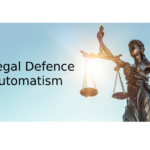Sofia Vergara Lawsuit: Who Owns Frozen Embryos?

If you enjoy an occasional spot of Hollywood gossip, you might be aware of Colombian-American actress Sofia Vergara’s bitter dispute with former partner Nick Loeb over who owns the couple’s frozen embryos.
The couple decided to freeze some of Vergara’s fertilised eggs in November 2013, but the pair split in May last year. Now, Vergara is alleging that her partner signed a contract allowing the eggs to be destroyed in the event of a break up.
Loeb disagrees, saying that destroying the embryos would be contrary to his pro-life values, and that he was pressured into signing the contract because Vergara was emotionally and physically abusive towards him.
The case highlights the problems associated with determining who gets to call the shots in cases where one partner wants to destroy a couple’s frozen embryos. And with IVF technologies becoming increasingly accessible in modern society, it is likely that courts will be called upon more frequently to determine these types of disputes.
What is IVF?
In-vitro fertilisation (IVF) is a practice frequently used by couples who are unable to conceive naturally. It involves collecting a number of eggs from a woman’s ovaries and then fertilising them outside the body using a man’s sperm.
A fertilised egg is known as an ‘embryo’, while sperm and eggs are known as ‘gametes’ prior to fertilisation.
The embryos are then planted in a woman’s uterus to stimulate pregnancy. As only one or two eggs are planted at a single time to prevent multiple births, any remaining eggs can be frozen for use in the future.
New South Wales law previously imposed a 10-year limit on storing frozen embryos, requiring any that were stored after this time to be destroyed. However, the government changed the law earlier this year after receiving complaints from women who argued that they were being forced to unnecessarily destroy embryos.
There is no longer a time limit upon the storage of frozen embryos, meaning that they can be stored indefinitely. It is estimated that there are currently 120,000 frozen embryos in storage around Australia.
Of course, a person’s circumstances can change over the course of many years – relationships can come to an end, other children may be conceived, or individuals may lose interest in having children altogether. In these types of situations, the question of what to do with a couple’s frozen embryos becomes a live topic.
What Does the Law Say About Ownership?
Couples who wish to undergo IVF treatment are required to sign a contract, which specifies what will happen to frozen embryos in the event of a relationship breakdown.
The use of frozen embryos in NSW is also regulated by the Assisted Reproductive Technology Act 2007 (the Act).
Section 19 of the Act prohibits a fertility clinic from allowing a sperm or egg to be used in a manner that is inconsistent with either party’s consent. This means that where one party says they no longer want their egg or sperm used, the other will be prevented from using the embryo.
Recent cases in other Australian states support this position. For example, in the Western Australian case of G and G [2007] FCWA 80, a man and a woman decided to store six frozen embryos during the course of their relationship. When that relationship came to an end, the woman sought to have the embryos destroyed, but the man asked for them to be transferred to his custody so that they could be used by another infertile couple.
A contract signed by the pair indicated that they would destroy the embryos if they split up, and the Western Australian Family Court found that the embryos should be discarded in accordance with the terms of this agreement.
Section 25 of the Act prohibits fertility clinics from storing an embryo unless they have the consent of the ‘gamete provider’ – who is the person that supplied the egg or the sperm used to produce the embryo. In the event that the gamete provider does not specify how long the embryo should be stored for, the law presumes that they have not consented to it being stored.
Ethical Issues
As IVF technology is still relatively new, the law is still in an embryonic stage (pardon the pun). Some experts suggest that more should be done to clarify the rights of those involved in the creation and storage of embryos, so that there are clear rules as to what should occur in specific situations.
Some have argued that women should have a greater say over the fate of a frozen embryo because females have a lower reproductive age than men, and decisions regarding embryos can therefore affect them more. Supporters of this position also point out that women face a greater ‘physical and emotional toll’ in conceiving and bearing children as a result of IVF, which may require them having to undergo numerous invasive procedures. Because of this, it is argued, embryos have a ‘greater significance’ to women who therefore deserve a greater say in decisions regarding their future use.
The contrary argument is that men should have an equal say because they have contributed half of the genetic material and, in the event of a birth, they may have significant financial obligations until the child achieves adulthood. Supporters of this position argue that decisions regarding embryos can affect men just as much as women, even though they do not physically carry the baby.
Others have argued that the ‘best interests’ of the embryo should be considered when determining whether or not it should be destroyed. This would essentially adopt the position of the Family Court in making decisions concerning children.
However, this view has been opposed by those who argue that legal rights should only attach to children once they are born, or at least much later in the development process, and that recognising an embryo’s legal rights would give rise to numerous other legal issues.






